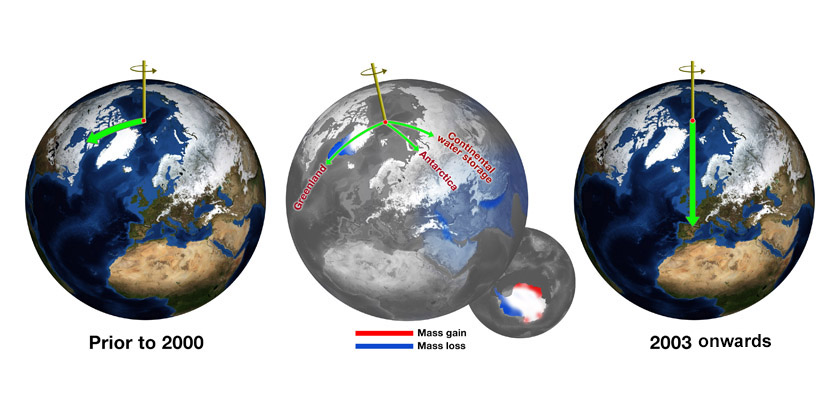Nepali scientist in NASA discovery
Kathmandu, September 20
Using observational and model-based data spanning the entire 20th century, NASA scientists led by Nepali-origin Surendra Adhikari, have for the first time identified three broadly-categorised processes responsible for the Earth’s spin axis drift — contemporary mass loss primarily in Greenland, glacial rebound and mantle convection.
Since the Earth is not a perfect sphere, it drifts and wobbles when it rotates on its spin axis and the movements are scientifically referred to as ‘polar motion’. Measurements for the 20th century show the spin axis drifted about 10 cm per year. Over the course of a century, that becomes more than 10 metres.
With these three broad contributors to the Earth’s spin axis drift identified, scientists can distinguish mass changes and polar motion caused by long-term Earth processes. They know that if Greenland’s ice loss accelerates, so in all probability will polar motion, according to NASA’s Jet Propulsion Laboratory in Pasadena, California.
Previous studies identified glacial rebound — a process in which Earth’s surface, depressed by heavy glaciers during the last ice age slowly rises back to its original position as that ice melts, or is removed — as the key contributor to long-term polar motion.
In the new study, which relied heavily on a statistical analysis of such rebound, the scientists figured out that glacial rebound is likely to be responsible for only about a third of the polar drift in the 20th century, according to the Jet Propulsion Laboratory.
The authors argue mantle convection makes up the final third. Mantle convection, basically the circulation of material in the mantle caused by heat from the Earth’s core, is responsible for the movement of tectonic plates on Earth’s surface.
The research findings have been published in a paper titled ‘What drives 20th century polar motion?’ co-authored by Adhikari and Eric Ivins in the journal Earth and Planetary Science Letters. It states that redistribution of mass on and within Earth — like changes to land, ice sheets, oceans and mantle flow — affects the planet’s rotation in general.
“We assembled models for a suite of processes that are thought to be important for driving the motion of the spin axis. We identified not one but three sets of processes that are crucial — and melting of the global cryosphere (especially Greenland) over the course of the 20th century is one of them,” said first author Adhikari.
As temperatures increased throughout the 20th century, Greenland’s ice mass decreased. In fact, a total of about 7,500 giga-tonnes of Greenland’s ice melted into the ocean during this period. This makes Greenland one of the top contributors of mass being transferred to the oceans, causing the sea level to rise and, consequently, a drift in Earth’s spin axis, according to the Jet Propulsion Laboratory.
While ice melt is occurring in other places (like Antarctica), Greenland’s location makes it a more significant contributor to polar motion.
Who’s Adhikari
Born in Lamjung in July 1983, Surendra Adhikari is affiliated to NASA’s Jet Propulsion Laboratory. He went to Saubhagya Secondary School at Chakratirtha in Lamjung.
He passed SLC in 1998 and came to Kathmandu to pursue ISc at Amrit Science Campus. After doing BE in Agricultural Engineering from Tribhuvan University’s Institute of Engineering in the Dharan-based Eastern Regional Campus in 2004, he went to Belgium for further studies.
He did MSc in Engineering Geology from Free University of Brussels in 2007. He completed his PhD in Geography from University of Calgary in Canada in 2012.
READ ALSO:






